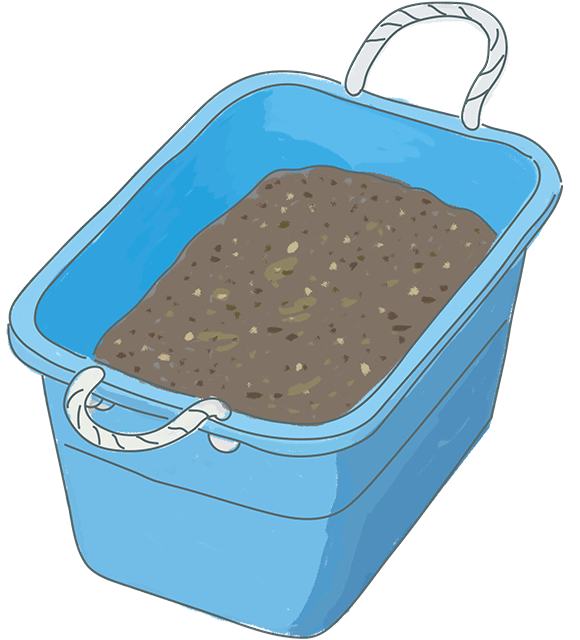

![]() We use fermentation
We use fermentation
![]() The volume of the compost
The volume of the compost
will not increase significantly


- To let it stay at the beginning
(to set the materials and pause) - To put the food waste directly and
quickly from the kitchen - To mix, stir and let the air in
(it's ok to leave it)
- Do not expose the waste on the surface
of the compost - Do not put water or liquid
in the compost - Do not give up (and fear failure).
-
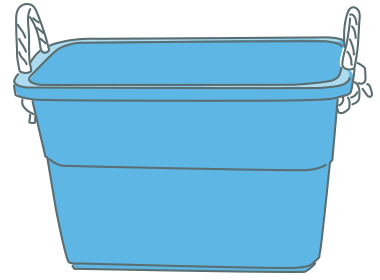
Plastic basin
36 litres
-
stirring tools
Small shovel


-

soil
10-15kgs
( 2 to 3 buckets full ) -
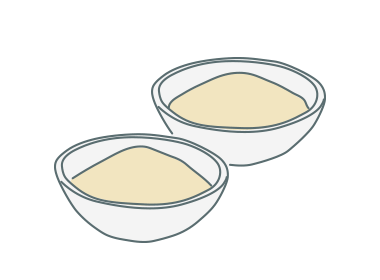
Rice bran
1kg ( 2 bowls )

-
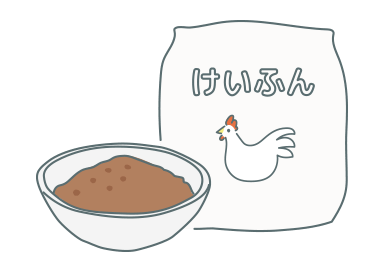
chicken manure*
0.5kgs

The ratio of Soil : Rice bran : Chicken manure = 15 : 1 : (0.5)
*The compost can be made without the chicken manure, but it can speed up the decomposition.
-
 Place the basin under a roof where rainwater cannot enter. Fill the basin with soil, rice bran, and chicken manure. Mix well with a shovel.
Place the basin under a roof where rainwater cannot enter. Fill the basin with soil, rice bran, and chicken manure. Mix well with a shovel.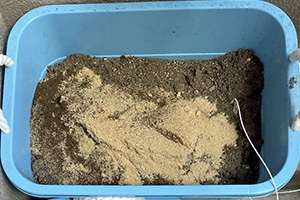

Be careful not to put too much soil in the tub, because it will be difficult to stir. If too much immature chicken manure is added, the smell will be strong. If too much rice bran is added, it will smell sour. In any case, the smell will gradually disappear. You can also add fallen leaves.
-
 Let it stand for about 1 week. (Leave it to relax).
Let it stand for about 1 week. (Leave it to relax).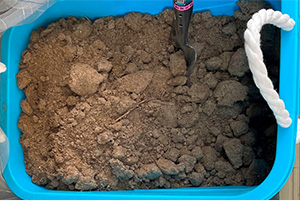
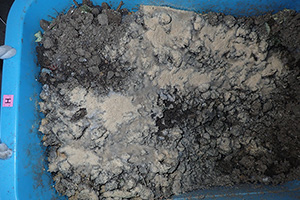
The temperature should rise to 55-60℃. However, this temperature depends on the season. In winter, the temperature can be as low as 30°C (86°F).
After one week,the brewing process is complete.
When rice bran is added, the soil may harden into a clumpy mass. If there is a lot of moisture, white mold may grow but this is no problem. This mildew (filamentous fungi) grows and decomposes and breaks down the waste. The growth of white mold is due to the high moisture content. Please stir well the rice bran and soil from the bottom to allow the moisture to evaporate. Lactic acid fermentation with rice bran may smell sour, but if you stir it every day, the smell will disappear in about 2 days.
-
 Put in kitchen waste
Put in kitchen waste
Drain the moisture from the kitchen waste. It's ideal if the water drops doesn't fall from the net, when you lift it up. A little water content is fine. However, do not add water. Place kitchen waste and vegetable scraps in the compost and stir to blend them with the soil.
Make sure that the waste is not out on the surface of the compost. Do not put in large quantities from the beginning. 200-500 grams is a good amount, but not more than 1 kg. If the waste is exposed on the surface, flies will come and lay eggs, which will hatch and become maggots. Beware of too much moisture, as it will cause a foul smell and attract insects.
Maggots are not insects that bite or suck blood.
Maggots are larvae of flies (e.g., housefly; Musca domestica and small fruit fly; Drosophila) and horseflies (e.g., American horse fly; Tabanus americanus). They can emerge in summer when eggs are laid on food scraps or when the moisture content of the compost materials increases. These maggots feed and decompose the food. They are decomposers that return food scraps to the soil. Although they do not necessarily cause compost failure, they can give discomfort. To reduce maggots, refrain from adding new food scraps to the compost and keep stirring from the bottom every day to allow the material to dry out. As the material dries out, the number of maggots will decrease.
-
Fermentation heat is generated when garbage is added.
The heat of fermentation is generated by microorganisms that use the nutrients in the garbage as an energy source. The temperature will vary depending on the content of nutrients in the garbage.
-
The drier the compost, the better the condition
Microorganisms such as filamentous fungi and other microorganisms seek moisture to nourish themselves and decompose waste. Ideally, the soil should be "dry to the crisp".
-
How to dispose of your waste from the kitchen
Before flies enter the kitchen and swarm on the food waste, bury it in the compost. Once inside the compost, flies will not come. If there are small flies in the kitchen, they often lay eggs in the disposal corner, which hatch in the compost and become maggots. (They hatch in the compost and become maggots, which turn into flies within a week or so.)
-
Properties of compost (color and texture)
As the compost is continuously filled with food, the clumpy material will be broken down to smaller particles and becomes lighter and easier to stir. The color of the compost will change from whitish to dark brown, and then to black as more nutrients are added.
-
Number of basins to install
Depending on the number of household members and the amount of food scraps, you may need to set up two or more basins and set up a day off, a day that no scraps are added to keep the compost in good condition.
(In summer, 500 grams will be an appropriate amount. In winter, the decomposition speed slows down.)
Let's observe what decomposes faster than others, and what doesn't decompose!
-
Those that decomposes
fast
Processed or heated food,
peels of bananas -
Those that decompose
slowly
Bones of chicken/ beef/ pork,
eggshells, Carrot peels, Radish hulls,
Orange peels etc. -
To remove

Coffee filters (some are
decomposable), teabags etc. -
Those that germinate
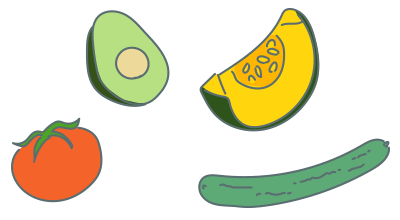
Tomatos, Pumpkins,
Avocados, cucumbers etc.
The compost can be left to mature, and be used for your gardens and plants.

If you want to use the compost for the garden, stop giving food waste for 2 weeks, and stir it once in 3 days.
After leaving it for 2 weeks, take a little part of the compost and soak in water, then smell it. If it does not give out a bad odour, it can be used for your garden or field. Apply it by sprinkling the compost onto the surface of the soil.
For use in flowerpots, mix the compost with soil at a ratio of 1:5 (compost : soil).
What's happening inside the basin is the same as inside an animal's stomach. When you fill it with chicken manure, it becomes very similar to a chicken's stomach. If too much waste is put in at one time, the chicken will become "full!". In this state of satiety, it cannot eat more. If more food scraps are fed then, indigestion may occur.
Please wait until it becomes "hungry" before adding garbage. For smooth decomposition, the appropriate ground temperature is about 36℃ with the fermentation heat. After adding the food, check that the temperature has dropped below 36℃ and that the microorganisms has become "hungry" before adding the food waste.
(In winter, the temperature may not rise up to 36℃, and the decomposition speed will decrease. If so, reduce the amount of garbage or slow down the pace of adding garbage.)
It can also be used to treat the disposed pet faces (e.g., of dogs, cats, etc.) without producing an odor. (Again, do not put water or liquid waste in the compost.)
After touching the compost or shovel,
always wash your hands with soap and water.

*For composting methods on this web page, please note "RIHN Compost (waterless dry compost style)".



